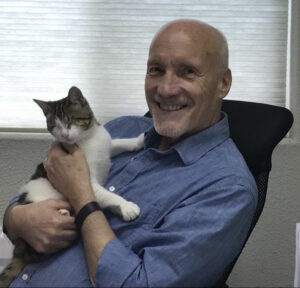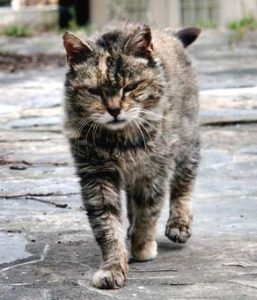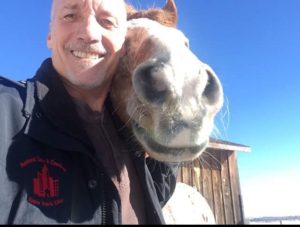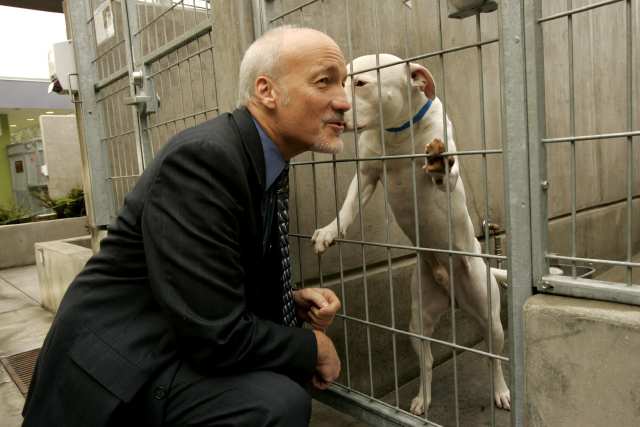 In the realm of animal welfare, collaboration stands as a powerful force for positive change, uniting individuals and organizations in a shared mission to protect and care for animals in need. Among the many collaborative endeavors, partnerships with rescue groups emerge as a key strategy, opening a pathway to expand resources, amplify impact, and unlock new opportunities for animals in need. As we look into the implementation of this strategy, we’ll see the transformative potential of collaboration with rescue groups and unveil innovative approaches to maximize its effectiveness. Continue reading “Strengthening Communities Through Collaborative Rescue Efforts”
In the realm of animal welfare, collaboration stands as a powerful force for positive change, uniting individuals and organizations in a shared mission to protect and care for animals in need. Among the many collaborative endeavors, partnerships with rescue groups emerge as a key strategy, opening a pathway to expand resources, amplify impact, and unlock new opportunities for animals in need. As we look into the implementation of this strategy, we’ll see the transformative potential of collaboration with rescue groups and unveil innovative approaches to maximize its effectiveness. Continue reading “Strengthening Communities Through Collaborative Rescue Efforts”
Building Trust Through Transparency and Accountability
 A Commitment to No-Kill Excellence
A Commitment to No-Kill Excellence
In the dynamic landscape of animal welfare, transparency and accountability serve as guiding principles, illuminating the path towards a future where every animal has the opportunity to thrive. By maintaining transparent reporting on shelter statistics, including intake, adoption, and euthanasia rates, shelters not only foster accountability and trust within the community but also gain valuable insights into areas for improvement and measure progress towards achieving no-kill goals. As we delve into the importance of implementing this strategy, let us explore the transformative power of transparency and accountability in advancing the cause of animal welfare. Continue reading “Building Trust Through Transparency and Accountability”
Empowering Communities Through Spay/Neuter Initiatives
 A Path to Preventing Animal Welfare Issues
A Path to Preventing Animal Welfare Issues
Within the complex network of animal welfare, spaying and neutering initiatives emerge as a beacon of hope and transformation, offering a proactive solution to the challenges of pet overpopulation and shelter overcrowding. By implementing low-cost or subsidized spay/neuter programs, shelters and communities not only address the immediate needs of individual animals but also tackle the root causes of animal homelessness and relinquishment. Today’s article reminds us of the importance of spay/neuter initiatives and unveils some creative implementation strategies that empower communities and pave the way for a future where every animal has the opportunity to thrive. Continue reading “Empowering Communities Through Spay/Neuter Initiatives”
The Power of Behavioral Rehabilitation in Under-Budgeted and Under-Staffed Shelters
 In the intricate web of animal welfare, the journey towards finding loving homes for shelter animals often encounters roadblocks in the form of behavioral challenges. These challenges, ranging from fear and anxiety to undesirable behaviors, can significantly hinder an animal’s chances of adoption and long-term success in a home environment. However, within the constraints of under-budgeted and under-staffed shelters, lies an opportunity for innovation, resourcefulness, and unwavering dedication to the well-being of every animal in our care. Let us embark on a transformative exploration of behavioral rehabilitation, uncovering the strategies and principles that empower shelters to nurture the minds and transform the lives of shelter animals. Continue reading “The Power of Behavioral Rehabilitation in Under-Budgeted and Under-Staffed Shelters”
In the intricate web of animal welfare, the journey towards finding loving homes for shelter animals often encounters roadblocks in the form of behavioral challenges. These challenges, ranging from fear and anxiety to undesirable behaviors, can significantly hinder an animal’s chances of adoption and long-term success in a home environment. However, within the constraints of under-budgeted and under-staffed shelters, lies an opportunity for innovation, resourcefulness, and unwavering dedication to the well-being of every animal in our care. Let us embark on a transformative exploration of behavioral rehabilitation, uncovering the strategies and principles that empower shelters to nurture the minds and transform the lives of shelter animals. Continue reading “The Power of Behavioral Rehabilitation in Under-Budgeted and Under-Staffed Shelters”
Exploring No-Kill Strategies: A Path to Reducing Euthanasia in Animal Shelters
In the quest to create more compassionate and humane communities, animal shelters play a pivotal role. One of the most significant shifts in recent years has been towards achieving “no-kill” status, wherein shelters aim to save the lives of all healthy and treatable animals. This ambitious goal is not only attainable but also essential in fostering a society that values the welfare of all its inhabitants, furry or otherwise.
Here are some key strategies that animal shelters can employ to move towards becoming no-kill facilities. I will expand on each of these strategies in the coming days: Continue reading “Exploring No-Kill Strategies: A Path to Reducing Euthanasia in Animal Shelters”
Navigating the Complexities of Animal Welfare: A Perspective by Ed Boks

As an animal welfare advocate with decades of experience in the field, I’ve encountered a diverse array of issues concerning the treatment of animals in our society. From factory farming to regenerative agriculture, compassionate conservation, and domestic pet management, each topic presents its own set of challenges and opportunities. In this article, I’ll delve into the multifaceted landscape of animal welfare, including the pressing issue of domestic pet management, with a particular focus on feral cats. Continue reading “Navigating the Complexities of Animal Welfare: A Perspective by Ed Boks”
Trap/Neuter/Return (TNR): A Humane Solution to Feral Cat Overpopulation

Feral cat overpopulation poses a significant challenge in various regions, including Hawaii, where colonies of free-ranging cats have become a contentious issue. The practice of Trap/Neuter/Return (TNR) emerges as a humane and viable solution to address this problem. Despite protests and criticism, TNR stands out as an effective approach that not only addresses feline overpopulation but also addresses the concerns raised by ecologists and wildlife advocates. Continue reading “Trap/Neuter/Return (TNR): A Humane Solution to Feral Cat Overpopulation”
USPS Celebrates America’s Love of Horses
 The US Postal Service is issuing these stamps to celebrate America’s love of horses. Once instrumental in the early economic development of the United States, horses are now valued athletes and loyal companions, and are important in law enforcement, forestry, entertainment, equine therapy and cattle ranching. This pane of stamps features five photographs of beautiful equines, each in profile. Derry Noyes, an art director for USPS, designed the stamps with existing photographs by Stephanie Moon and Karen Wegehenkel. Continue reading “USPS Celebrates America’s Love of Horses”
The US Postal Service is issuing these stamps to celebrate America’s love of horses. Once instrumental in the early economic development of the United States, horses are now valued athletes and loyal companions, and are important in law enforcement, forestry, entertainment, equine therapy and cattle ranching. This pane of stamps features five photographs of beautiful equines, each in profile. Derry Noyes, an art director for USPS, designed the stamps with existing photographs by Stephanie Moon and Karen Wegehenkel. Continue reading “USPS Celebrates America’s Love of Horses”
The Timeless Connection Between Humanity and Equines
In the bustling hum of urban life and the echoes of history’s whispers, there exists a profound and enduring tale of kinship – the timeless bond shared between humans and equines. As we venture into the depths of this intricate relationship, the narrative unfolds, revealing a tapestry woven with threads of companionship, resilience, and shared destinies. Continue reading “The Timeless Connection Between Humanity and Equines”
history’s whispers, there exists a profound and enduring tale of kinship – the timeless bond shared between humans and equines. As we venture into the depths of this intricate relationship, the narrative unfolds, revealing a tapestry woven with threads of companionship, resilience, and shared destinies. Continue reading “The Timeless Connection Between Humanity and Equines”
Celebrating the Diversity of Equines
Today, I want to expand upon our recent discussion concerning equine welfare and the rich diversity found within the equine family. The intricate tapestry of their roles in our lives, from their remarkable qualities to their profound impact on human society, offers a captivating narrative that deserves our appreciation and admiration.
concerning equine welfare and the rich diversity found within the equine family. The intricate tapestry of their roles in our lives, from their remarkable qualities to their profound impact on human society, offers a captivating narrative that deserves our appreciation and admiration.
So, in today’s blog, I want to venture further into the heart of what makes each type of equine so unique, as well as share some inspiring words that have sought to capture their essence across the ages. Continue reading “Celebrating the Diversity of Equines”
